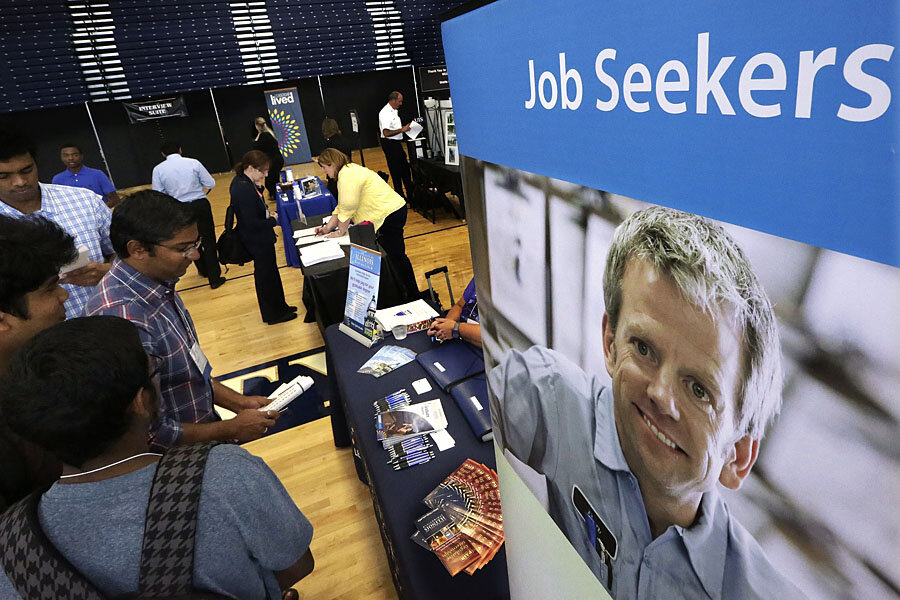Unemployment hits a six-year low at 5.9 percent. Can wages catch up?
After stumbling a bit in August, the job market picked up again in September, and unemployment is now at its lowest level in six years. Now experts say, it’s time for wage growth and labor force participation to catch up.
The US economy added 248,000 jobs in September, according to the monthly report released Friday by the Bureau of Labor statistics (BLS). Economists had been expecting about 215,000 in added jobs. The unemployment rate notched down to 5.9 percent – its first time below the closely-watched 6 percent mark since before the Great Recession.
The report was welcome relief after an unexpectedly poor showing in August, when the economy failed to add over 200,000 jobs for the first time in six months. The new data suggests that figure was a blip, and a little bit too low. Employment figures for both July and August were revised upward, from 212,000 to 243,000 and 142,000 to 180,000, respectively. Payrolls have grown an average of 224,000 each month in the third quarter.
“Today’s report vindicated the ‘have some patience,” tone we took last month, with large upward revisions to both August and July payroll growth and then a stronger than anticipated September gain,” Joshua Shapiro, an economist with MFR, Inc., wrote in an e-mailed analysis.
He added that the slight increase in the average number of hours worked, to 34.6, was also cause for optimism.
The biggest growth came in the professional business services category, which added 81,000 new jobs. Many other sectors, including retail, mining, food service, and construction also saw robust growth. Food and beverage stores added 20,000 extra jobs, largely credited to the end of strikes at the Market Basket supermarket chain in New England last month.
The third quarter represents a bit of a return to normal, writes Markit economist Chris Willaimson, via e-mail. “While the weakness in the first quarter reflected extreme weather disruptions, the second quarter was buoyed by the rebound from this weather,” he says.
Still, despite the cheery headlining numbers, two big worries about the job market’s overall strength linger. One is labor force participation, or the percentage of the overall population engaged in the workforce. The rate dipped slightly from 62.8 percent to 62.7 percent last month and is hovering at its lows not seen in nearly four decades.
Some of that, Shapiro notes, can be blamed on Boomers slowly aging out of the workforce. “But some of the decline is more worrisome,” he says, “as the participation rates of the youngest workers have been declining, which is more of a barometer of limited job prospects than of anything demographic.”
The other problem is wage growth, or a lack of it. Average hourly earnings barely budged in September (falling 0.1 percent) and have risen just 2 percent since September of last year. The concern is that if consumer spending power keeps being held back and wages don’t start rising soon, the economy won’t be prepared in the event of the Federal Reserve raising interest rates. “Without substantially higher wage growth, the fear is that households will pull back on consumption if interest rates and borrowing costs start rising, snuffling out the wider economic recovery,” Mr. Williamson writes.
But the Fed are unlikely to speed up the hike in interest rates if the economy isn’t ready for it, writes Michael Gapen at Barclays Research. “Continued progress in labor markets will likely keep the Fed on a path to normalization, but it will likely remain patient during the transition, given modest wage and inflation pressures,” he says. “We maintain our view that it will raise rates in June of next year, with risks tilted in toward March should labor market conditions improve faster than expected.”









